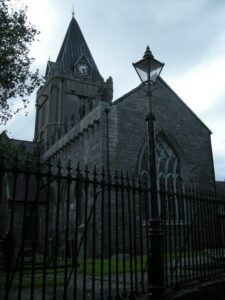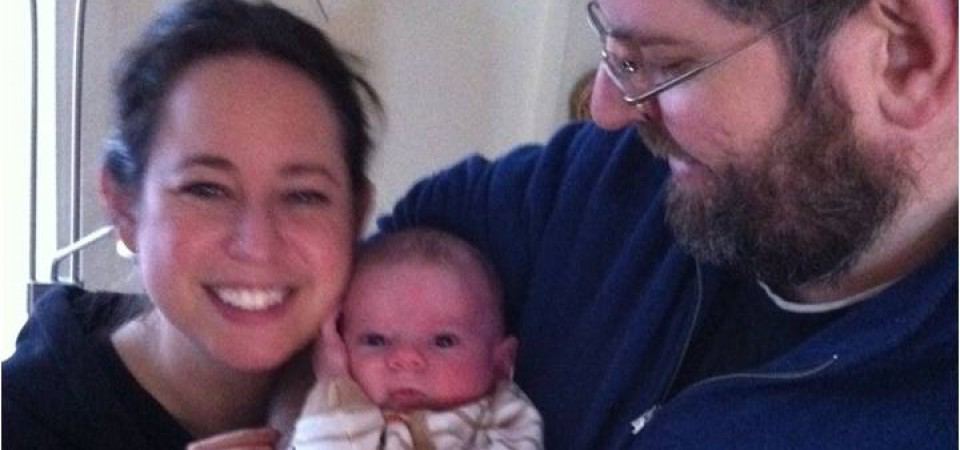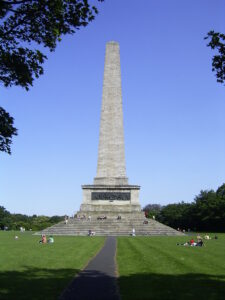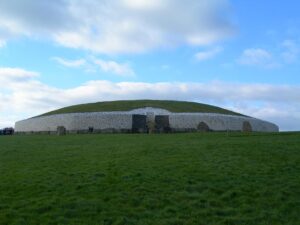This page includes some guidance on the planned activities around the wedding proper, followed by suggestions of activities you may want to engage with during your time in Ireland (if you’re visiting from overseas) – in and around Galway, in Dublin, and elsewhere. The end of the page includes additional information on child-friendly activities.
Wedding-related activities
Tuesday, 26th June: Pub crawl in Galway city. A draft schedule is now available. Galway has a great collection of pubs, and we’ll use this opportunity to introduce you to some of our favorites. You’ll note that pubs are in three categories: three ‘highlight’ stops, where all participants will meet up; another four scheduled stops that fill the gaps between the highlights – some may choose to linger at the highlight venues, and skip over these; and finally another half-dozen or more venues that are suggested for those looking for a more intensive (and extensive) ‘crawl.’ Galway locals on the tour will no doubt be able to suggest others of the 80 Galway pubs that are worth including, for those still looking for additional venues.
Wednesday, 27th June: Depending on how people are feeling (see schedule for Tuesday, above), we’re hoping to visit some local sights, perhaps taking a day tour out of town to the Burren and Cliffs of Moher. We’ll figure out details for this informal excursion as we get closer to the day, depending on the numbers interested in participating – a smaller group may involve a convoy of cars, while if there’s a larger group, we may take advantage of one of the bus tours operating out of the city.
Thursday, 28th June, 4pm: Wedding ceremony. Dinner and reception follow later that evening.
Friday, 29th June, late afternoon: Convalescent gathering. We’ll meet in a Galway bar/restaurant for a relaxing evening of conversation and merriment.
In the days before the wedding – from Friday 22nd to Sunday 24th – we’ll be in Dublin, and welcome opportunities to meet up with those sightseeing here during those dates. We’ll be staying around Galway following the wedding, and again welcome opportunities to sightsee with those looking to explore the west coast.
Things to do in Galway city

St Nicholas’ Collegiate Church. By wikipedia user Baronplantagenet, licensed under CC-Attribution-ShareAlike-3.0-Unported
- Galway city centre is largely pedestrianized, and both easily traversed, and worth strolling around, to take in the various historic details. It’s worth considering a guided walking tour and there are also some bus tours of the city (though these will miss many of the details in the historic city centre). Whether you take a formal tour or not, don’t miss spots like St. Nicholas’ Collegiate Church (dating to at least 1320, which Christopher Columbus is believed to have visited while staying in Galway when he worked as a merchant seaman in the years before he tackled trans-Atlantic travel, and which also hosted Cromwell’s forces during their time in the city), the Lynch memorial window (now set into a wall at the back of St. Nicholas’s churchyard), from which a local magistrate is reputed to have hanged his own son, and the impressive renovated section of the city walls that are housed inside the Eyre Square Shopping Centre.
- The Spanish Arch is perhaps the best known remnant of the old city. The Spanish Parade in front of it, an old market area where residents from the Claddagh village across the river used to come to sell their fish, has been tastefully redeveloped in recent years, and is a nice spot to come and stand by the river Corrib as it meets the sea. Going upstream from the Spanish Arch, there’s a walkway, with the river on one side and an old mill race on the other, that goes as far north as the Salmon Weir bridge, which stretches from the city Courthouse to the Cathedral on the other side of the river. (Interestingly, the cathedral is a popular sight with tourists, but is much younger than many assume, having been dedicated in 1965.)
- The Galway City Museum is situated in a newly constructed building just behind the Spanish Arch, and there’s still a sense that it’s bedding down as a venue, with a rather idiosyncratic mix of displays. With no charge for admission, it’s worth stopping in to see items like their Galway hooker (a type of fishing vessel unique to the Galway region).
- Going south through the Spanish Arch, you can travel along the Long Walk, a terrace of older houses (and a newer townhouse/apartment development that’s rather well camouflaged). Alternatively, you can travel across the river (this is Wolfe Tone bridge, named after the 18th century patriot), and travel alongside the Claddagh basin, out on Nimmo’s pier, and then follow the walkway to the beaches of Salthill. The Salthill ‘prom’ (promenade) is one of Galway’s most popular recreational spots, and the walkway has been extended and improved in recent years, providing a high-quality 5km walkway from the city centre to the diving platform at ‘Blackrock’ at the end of the prom.
- Mention of the Claddagh village and basin demand mention of the history of this community. The Claddagh was a fishing village just across the river from the walled city (which was situated wholly on the eastern bank of the Corrib). Galway was an Anglo-Norman town (granted its charter in 1484) and for many years the native Irish population was unwelcome, with sundown laws and the Spanish parade providing a market space where those from the Claddagh came to sell their wares, before heading back across the drawbridge that separated the village from the city. Under some interpretations, the name ‘Galway’ derives from the Irish word ‘Gall’ for stranger or foreigner. The Claddagh village had many distinctive customs, including the black shawls worn by the women, their own elected king, and the annual blessing of the fishing fleet, which continues to this day. The original thatched cottages of the village were torn down in the late 1920s and early 1930s, seen as unsafe for modern habitation.
- The Claddagh also gave its name to the Claddagh Ring, which will be familiar to many of our guests from our Save the Date video and our wedding invitation. The ring, with two hands clasping a heart, topped by a crown, originated in Galway, though it has become increasingly popular elsewhere, with its symbolism of love, friendship, and loyalty.
- Galway is famed for its pubs and nightlife – online guides list around 70 pubs in the city – and any visit to the city should include time spent relaxing in some of the city’s pubs. In recent years, many pubs have developed outdoor beer gardens and patio areas – in large part as a result of the ban on indoor smoking – and if the weather cooperates, there’s little to beat sitting outside Tigh Neachtain or The Quays, both on Quay Street in Galway’s active ‘Latin Quarter’ (so named after the local Spanish Arch, and as a nod to the active pub and restaurant sector). Local pubs with regular ‘sessions’, where musicians gather to play a varied mix of traditional and folk music, include Tigh Chóilí, Tigh Neachtain, Taaffe’s, and (just across the river from the city centre proper) The Crane Bar. (Note: Ti or Tigh is the Irish/Gaelic for ‘house of’, so Ti Neachtain translates roughly as ‘Naughton’s place’ – the sign on the outside of the building actually reads “Seaghan Ua Neachtain”, which translates as “John/Seán Naughton”.) If you’re interested in experiencing the Irish language in a social setting, you might be interested in checking out the Irish language social club/bar, Club Aras na nGael, which has a varied calendar of social and cultural events, all through the medium of Irish, though some aimed at those without much or any previous understanding of the language.) Our Tuesday night pub crawl will aim to cover a range of pubs (our favourites include several in the Dominick Street/Sea Road area, such as the Rosin Dubh, the Salt House, Bier Haus, and Massimo’s), but you’re encouraged to explore for yourself, and find your own favourite spot.
- For those staying around Galway after the wedding, festival season ramps up as we get into July. The Volvo Ocean Race will dominate activities from the beginning of July through to 8th July. A brief respite, and the Galway Film Fleadh will run from 10th to 15th, followed by the Galway Arts Festival, from the 16th to 29th July, and the Galway Races (horse-racing festival) from 30th July to 5th August.
Other local sights within a day trip of Galway
- Visitors should be aware that the Volvo Ocean Race will be finishing up in Galway the week following the wedding. It’s expected that up to 50,000 international visitors will come to Galway for the event (almost doubling the city’s population), and hotel prices will likely increase in the days following the wedding. The boats are expected to arrive in Galway July 3rd, with various in-harbour races scheduled for the 6th, 7th, and (possibly) 8th.
- The Aran Islands. Ferries to Inishmore (home to the prehistoric Dun Aengus stone fort), Inisheer, and Inishmaan leave from Rossaveal via a short bus ride from Galway city. This can be done as a day trip, but there are good deals for overnight stay in hostels or B&Bs, and with lively pubs it’s definitely recommended.
- Connemara, a region of unparalleled natural beauty, and home to Connemara National Park; Kylemore Abbey; Aughnanure Castle; and Lough Corrib.
- The Burren, one of the largest karst landscapes in Europe. The Burren is home to many Neolithic wedge tombs; Megalithic portal tombs (such as the famous Poulnabrone dolmen); stone ring forts and various other monuments; and Aillwee Cave.
- The Cliffs of Moher (or the Cliffs of Insanity!!)
- Coole Park. Associated with members of the Irish literary revival, such as W.B. Yeats and Lady Augusta Gregory (whose family home this was), the house was unfortunately lost to fire in 1941, but is home to an interesting interpretative centre, and some enjoyable trails.
- Clonmacnoise. A monastery founded between AD 545 and AD 548. The site includes the ruins of a cathedral, seven churches, two round towers, three high crosses, and the largest collection of Early Christian grave stones in Western Europe.
- Ceide Fields. An extensive Stone Age site that contains the oldest known field systems in the world.
- Sligo. This county, so closely associated the poetry of Yeats, has wonderful scenery, and some significant archaeological sites. For example, you can visit Yeats’ grave at Drumcliff at the base of Benbulben; Carrowmore Megalithic cemetery (one of the oldest and largest Stone Age cemeteries in Western Europe); Queen Maeve’s Tomb; Rosses Point (and its beautiful 2 km-long beach); and Lissadell House.
- The town of Cong, the setting of the 1952 film “The Quiet Man,” which starred John Wayne and Maureen O’Hara. Home to Cong Abbey and close to Ashford Castle.
Things to do in Dublin
- Dublin has a plethora of museums and galleries, many of which have no charge for their regular exhibitions. The National Museum of Ireland has several campuses in Dublin, including the National Museum of Archaeology & History on Kildare Street, which includes items like the Tara Brooch and a collection of bog bodies. Almost directly behind the Archaeology museum is the Natural History museum, which has been laid out in similar fashion for over a century, so it’s an insight into museums of the past (and the 19th century love of taxidermy) as much as anything else – a quirky, interesting site. Completing the central museum district between Kildare Street and Merrion Square you can find the National Gallery, with a good collection of Irish and international art, and the National Library, which is currently hosting a major exhibition on the life and work of W.B. Yeats. The museums adjoin Leinster House, with the offices of the Irish Government (including the Department of An Taoiseach – Prime Minister – and Department of Finance) on the other side.
- The Decorative Arts and History campus of the National Museum is on the north side of the river, just a few stops on the LUAS (tram system) from O’Connell Street, in the former Collins army barracks.
- Outside the main museum complex, interesting cultural destinations include the Chester Beatty Library in Dublin Castle (with a significant collection of Islamic and Asian art). Dublin Castle was the centre of British military power in Ireland, and its courtyards can be interesting to stroll around.
- Kilmainham Gaol is a former prison, which housed the leaders of the 1916 Rising (a key episode in the struggle against British rule in Ireland), and which now hosts a museum. A related site is the Arbour Hill cemetery where those leaders of the 1916 Rising who had been executed at Kilmainham were interred. Those interested may want to travel out of the city centre to the Glasnevin cemetery, which is the burial site of many cultural and political figures.
- Parnell Square, at the north end of O’Connell hosts the Irish Garden of Remembrance, dedicated to those who died during the Irish struggle for independence. The north side of Parnell Square has a number of cultural sites, including the interesting Dublin City Gallery (the Hugh Lane Gallery) and the Dublin Writer’s Museum. Just off the square is the James Joyce Centre, which will have just finished celebrating Bloomsday.
- Dublin has a significant literary heritage, of course, and other sites of note include Trinity College, which has the largest library in Ireland, at 5 million volumes, including the famous Book of Kells. Jonathan Swift, author of Gulliver’s Travels and A Modest Proposal, was Dean of St. Patrick’s Cathedral from 1713-1745.
- Christ Church Cathedral, across the road from Dublin Castle, was founded in 1030 A.D., and is connected by a medieval footbridge to Dublinia, a guide to Viking Dublin – this part of the city is among the oldest, and you can see outlines in the pavements, marking where viking remains were found.
- The Guinness Storehouse provides an introduction to brewing and the history of this iconic Irish beverage. Topping off your visit (literally), the tour finishes in a bar with a panoramic view of Dublin city, and a free pint of ‘the black stuff.’ For those with a fondness for something a little stronger, a visit to the Old Jameson Distillery may be in order.
- Speaking of beer and whiskey, Dublin has its fair share of pubs. Some of the distinctive pubs include The Brazen Head (supposedly the oldest pub in Dublin, dating back to 1198), the Long Hall (with an old fashioned bar/lounge arrangement), the Stag’s Head (with a marvelous snug), and O’Neills (with its many nooks and crannies). The Temple Bar ‘cultural quarter’ bounded by Dame Street to the south and Westmoreland Street to the east is a lively spot full of pubs, restaurants and nightclubs – check out the Porterhouse brewpub, or have a drink at the Octagon bar of the Clarence Hotel.
- Walk around some of Dublin’s Georgian Squares, including St. Stephen’s Green and Merrion Square Park, or pay a visit to the Phoenix Park, the largest enclosed city park in Europe, which is home to Áras an Uachtaráin (President’s residence) and Ashtown Castle, as well as a number of other historic buildings – and Dublin Zoo.
- Several of Dublin’s streets have been pedestrianized. Grafton Street, on the south side of the river (between Trinity College and St. Stephen’s Green) is one of the main shopping streets, always has several street performers, and usually flower sellers by day, and has many smaller streets and lanes running off from it. Take a peek at the Powerscourt Centre. Nearer the river, the bustling Temple Bar area is pedestrian-friendly, and home to both the Irish Film Institute and many of the city’s most popular pubs. On the north side, check out the Moore Street market – Ireland’s oldest food market – just around the corner from the GPO (General Post Office) on O’Connell St, which was the headquarters of the rebels during the 1916 Rising, and still bears bullet marks on its pillars.
- Take a walk along the Grand Canal (which rings the south side of the inner city), and sit on the bench that inspired poet Patrick Kavanagh:
O commemorate me with no hero-courageous
Tomb – just a canal-bank seat for the passer-by.
- Or see the Royal Canal (on the North side), commemorated in Brendan Behan‘s Auld Triangle:
In the women’s prison
There are seventy women
And I wish it was with them
That I did dwell
Then that auld triangle could go jingle-jangle
All along the banks of the Royal Canal
Other sights within a day trip of Dublin
- The Boyne Valley region just north of Dublin is home to some of Ireland’s most significant and impressive prehistoric sites, including Newgrange, a Neolithic passage tomb dated to 3200 BC (older than the Great Pyramids at Giza), which forms part of the Brú na Boinne set of passage tombs; the Hill of Tara, the ancient seat of the High Kings of Ireland; and the Hill of Slane, associated with St. Patrick, and with the remains of a friary that was last restored in 1512. Other sites in the area include Monasterboice, which is home to two high crosses, Muirdeach’s Cross and the West Cross, and Mellifont Abbey, the first Cistercian monastery in Ireland, founded in AD 1142.
- Malahide Castle. A 12th century estate located 9 miles north of Dublin city.
- There are lots of pretty seaside towns just outside of Dublin city proper accessible via the DART. For example, there is Howth (25 minutes to the north) and Bray (25 minutes to the south).
- The Wicklow mountains have some impressive views and great hiking trails. Key sites here include Glendalough, which has the remains of a monastery associated with St. Kevin.
- Belfast. Capital city of Northern Ireland. Just over 2 hours from Dublin by train (from Dublin’s Connolly station).
Things to do elsewhere in the country
- The Ring of Kerry. One of the most popular tourist attractions in Ireland since Queen Victoria included it on her visit to Ireland, and with good reason. A circular route around the Iveragh Peninsula with stunning scenery and ancient heritage sites. Some of the major attractions along the Ring of Kerry include: Kilarney National Park; the Gap of Dunloe; the Kerry Bog Village; Staigue Fort; Cahergal and Leacanabuaile Stone Forts; Molls Gap; Ladies View; the Torc Waterfall; Muckross House; Ross Castle; Muckross Abbey; Skellig Michael; and Ballycarbery Castle.
- Cork City and Blarney Castle.
- Dingle Peninsula. Visit the town of Dingle, home to Fungie the Dingle dolphin; Inch beach; Dunbeg Fort; the Fahan Beehive Huts; and the Blasket Islands.
- For those staying around the country a little longer, the 40th annual Willie Clancy Summer School, Ireland’s largest traditional music summer school, runs from 7th to 15th July in Miltown Malbay, Co. Clare. The Connacht Fleadh – a competition of Irish music, song, and dance – runs from 3rd to 8th July in Ballinasloe, Co. Galway.
Child-friendly activities
Pretty much everything on our list is open to children, but for those looking for activities that will be particularly well suited to the younger members of your party, you might be interested in the following:
- Craggaunowen – which features reconstructions of pre-historic Irish housing and forts, among other things.
- Ailwee Cave. About 40 minutes from Galway, in the Burren. Includes the Birds of Prey Centre.
- Dublin Zoo. Set in Phoenix Park.
- Dublinia. Experience Viking and Medieval Dublin. Located next to Christ Church Cathedral in Dublin.
- Bunratty Castle and Folk Park. Located on the main Galway-Limerick road, approx. 10 miles from Shannon Airport.
- Imaginosity. Dublin Children’s Museum.



